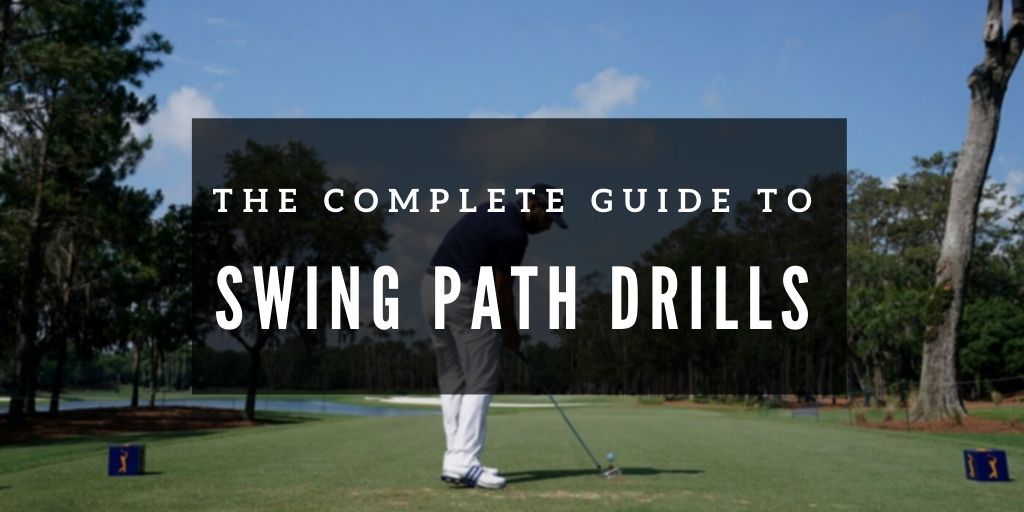
Swing path is likely one of the more misunderstood aspects of the swing for the average golfer. To start, there probably isn’t a single “ideal” swing path. Golfers at the highest level swing and have success with different paths at impact. That’s not to say that swing path doesn’t matter, however, as it’s a key element along with face angle and strike quality to sending the ball to the target.
To help golfers with their swing path, we will look at drills that can be done almost anywhere with household items.
But first, let's understand the different kinds of swing paths and how to diagnose your tendencies.
Understanding the Types of Swing Paths
Here is a brief explanation of the two different kinds of swing paths before we explore the drills.
In-to-Out Swing Path
With an in-to-out swing path, the clubhead travels from the inside of the target line to the outside of the target line as it impacts the ball.
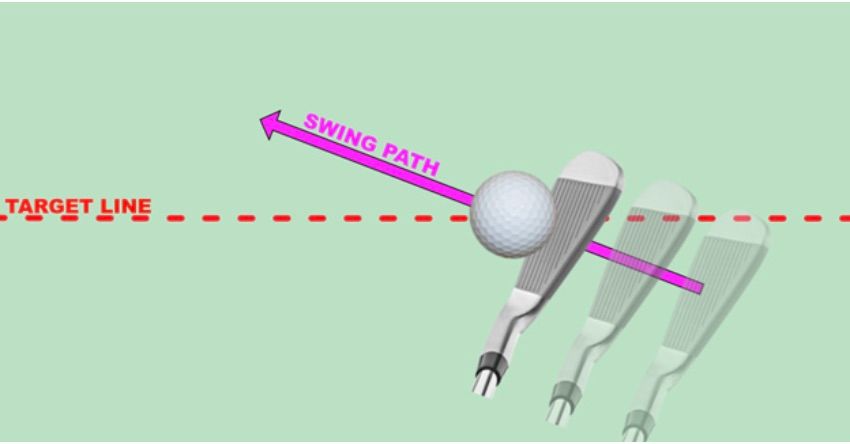
Out-to-In Swing Path
An out-to-in swing path is the opposite; the clubhead travels from the outside of the target line to the inside as it impacts the ball.
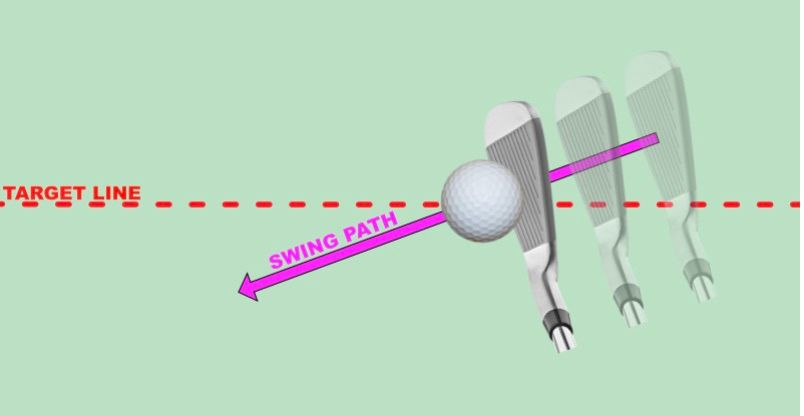
With the clubhead traveling directly down the target line at impact, a true neutral swing path is technically possible, but not something that golfers consistently create. For reference, the PGA tour average swing path is 2.6 in-to-out, but this can vary greatly based on the player and which club is being used.
If an excessive in-to-out or out-to-in swing path affects your ability to produce a consistent shot, follow the tips and drills below to work on creating the right path for you.
Swing Path Drills
Know Your Path
The first step in improving is understanding what sort of path you are creating. Launch monitors such as the GC Quad, Trackman, and FlightScope provide this data down to the degree, but you can get an idea for yourself simply by recording your swing.
Either with a tripod or with the help of a friend, take several “down-the-line” recordings of your swing. Try to be as directly behind the ball as possible, with the camera pointing down the target line. Just watching the video can probably give you an idea if your swing path is in-to-out or out-to-in. But for more details, you can import your video into an app that allows you to draw on the screen. Hudl Technique is one app with this function available in the free version.
Once you’ve loaded your swing video in the app, using the drawing tools to create a visible target line through the ball. Now you can watch the video, focusing on the frames immediately before and after impact to better understand the clubhead's path. Watch several swings this way to look for your most common path and the severity as it can definitely vary from swing to swing.
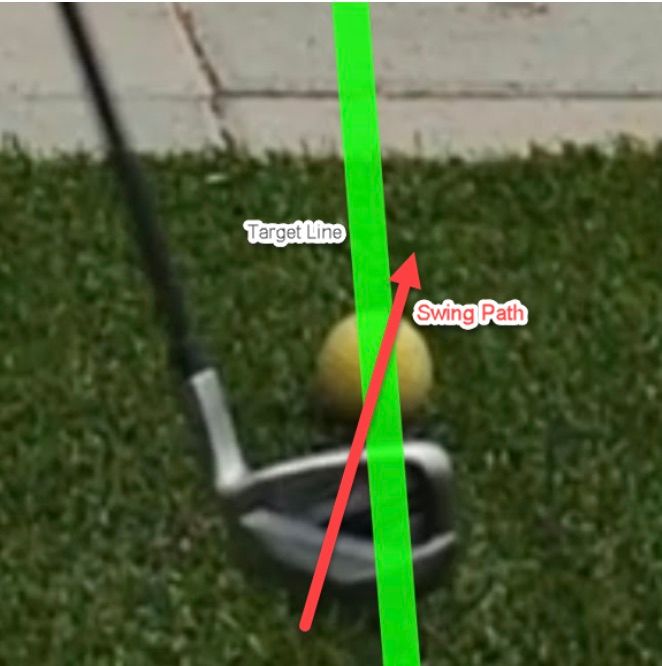
Create Swing Path Obstacles
Creating an obstacle is one of the most effective methods for modifying the swing path. The good news is that once you understand your swing path and how you’re trying to influence it, you can easily set up obstacles for yourself.
Cardboard Box
The humble cardboard box is an old standby among golf instructors. Whether it is the long, skinny box, your clubs came in or shoebox - a box can make a great obstacle for swing path drills. Even top instructors like Butch Harmon frequently use it, and Brooks Koepka has been spied on the range using a box.
The drill itself is simple. Align the box for the swing path you want to practice (outside the target line if you are excessively in-to-out, inside the target line for the opposite). Then rehearse the swing in slow motion with the desired path, and hit a ball focused on making a good strike without hitting the box. You can see this and other box drills demonstrated in the video below:
https://www.youtube.com/watch?v=R0SmRrsY770&feature=youtu.be
What makes a box an ideal object for this drill is that it will provide obvious feedback if you strike it but won’t damage your club.
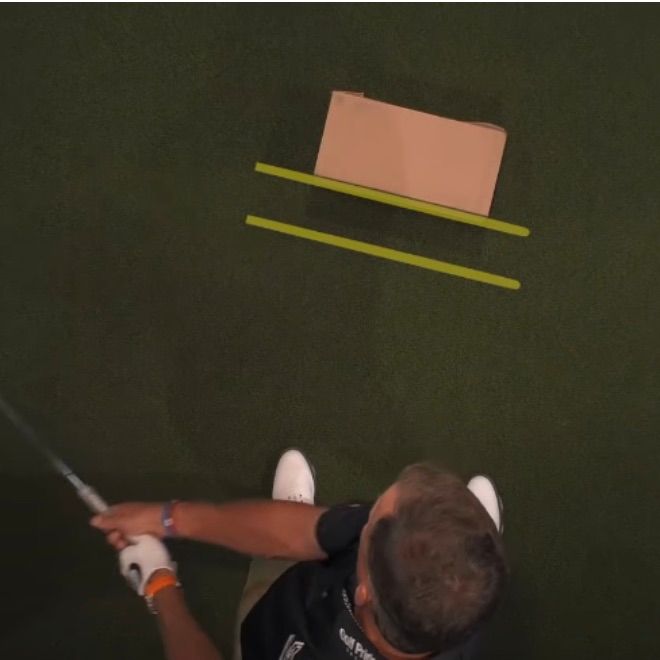
Another popular option that you’ll already have with you is a driver headcover.
Be careful using the headcover out on the range, though, as you can probably smack it a fair distance and then have to run out to grab it. Alignment sticks are not really recommended for this drill as the fiberglass material could shatter if struck by the clubhead.
Last but not least, you can use a water bottle as referenced in the video below:
The Nail Drill
This swing path drill from Adam Young is one of our favorites and works like a charm for golfers of all levels:
Use Tees to Test Your Path
An extension of the obstacle drill above that works well if you have a grass practice area is to use golf tees as a training aid. First off, a line of tees next to the ball parallel to the target line can give great feedback, especially for golfers with an “over-the-top” swing move sending the clubhead excessively out-to-in. Additionally, as demonstrated in this video from the Golf Fix, you can use tees diagonally set from the ball to create a swing path “channel” you can challenge yourself to swing through without hitting the tee.
A good variation of this drill is to reverse the tee positions, testing your ability to produce the swing path you want with your irons. Set a tee in the ground in front of and slightly to the side of the ball, depending on if you are trying to swing in-to-out or out-to-in. The drill's objective is to hit the ball with solid contact and clip the tee just past impact. This drill also encourages hitting the ball with a downward angle of attack with your irons, an essential part of good strikes.
Start with pitch and punch shots with this drill to rehearse the impact position and build up to full swings.
Eyeline Speed Trap
One product that addresses swing path issues directly is the EyeLine Speed Trap. For years, it's been one of the most popular training aids on the market. Recently, they introduced a newer model that incorporated a lot of feedback they received over the last several years. This video shows how it works:
Face to Path
As mentioned, the club path is a critical factor in the flight of the ball. It is not the only factor, though, and understanding the “face-to-path” relationship is essential to know what’s happening to the ball at impact and the steps you can take to correct it.
A fantastic and easy to remember explanation was made by Andrew Rice in his “Royalty of Shot Shape” video:
Also, you can listen to this podcast to understand how important face angle is for accuracy:
Golf Science Lab · ACCURACY... How do you find it?Practice the swing path drills above to get your swing where you want it to be. Combine it with solid strikes and face angle control and you’ll be well on your way to hitting the shape of the shot you want when you want to hit it. Also, be sure to join us over on the Practical Golf forums to share your thoughts on these drills and also any of your own favorites.
Also, be sure to check out my putting drills and chipping drills guides as well.
We care about the protection of your data Read our Privacy Policy